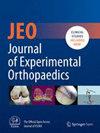Primary anterior cruciate ligament (ACL) reconstruction graft failure remains a significant health concern in young patients. Despite the high incidence of poor graft integration in these patients and the resulting high failure rate, little consideration has been given to the quality of the bone into which the graft is anchored at reconstruction. Therefore, we investigated post ACL injury mineralized tissue changes in the ACL femoral entheses of young males and compared them to changes previously reported for young females.
ACL femoral entheses and adjacent bone specimens were harvested from the injured knees of 51 young males during primary ACL reconstructive surgery and from 10 non-injured male cadaveric donors. The specimens were imaged via nano-computed tomography and analyzed for volumetric bone mineral density (vBMD) and architectural changes.
Male femoral ACL explant specimens had significantly lower cortical vBMD (p < 0.001), lower relative bone volume (BV/TV, p = 0.027) and greater cortical bone porosity (Ct.Po, p = 0.027) but similar trabecular bone parameters (p's > 0.05) to those of control specimens from male cadaveric donors. Cortical and trabecular bone loss increased significantly with time from ACL injury to reconstructive surgery (p's < 0.05). While cortical loss occurred in both males and females, significant trabecular loss occurred only in females (p = 0.009).
Femoral entheseal bone loss occurs in males following ACL injury. This bone loss increases with time following ACL injury, with cortical bone loss occurring sooner after injury than trabecular bone loss. The effects of ACL injury and time from injury to surgery on trabecular bone microarchitecture differed between male and female patients.
N/A.



